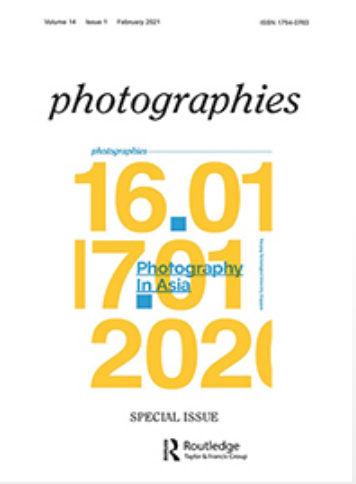
The writing, transformation, and rewriting of photo archives in Chinese photography from the 1940s to date
He Yining
In recent years, photographers around the globe have begun to break the conventional linear sequence in the construction of photographic texts, opting for a new wave that allows multiple narrative strategies of the real or the fictional. They fuse documents, historical photos, texts, and carefully-constructed images, taking viewers to times and places in the past, to boundaries that can or cannot be told. This kind of practice not only reflects the artists’ interest and urgent desire to delve into history but also reveals the space that has been opened for photographic practices by the richness of social and cultural environments in history. In China, the research on archival art and its phenomena have appeared continuously in recent years, but it is mostly written based on the theories of western scholars, such as T. R. Schellenberg, Jacques Derrida, Michael Shanks and others, and lacks a discussion on archives in the political, social and cultural context of modern and contemporary China. Based on my ongoing research on the historical narrative of contemporary Chinese photography, this paper will focus on the relationship between archives and photographic art in a broader context, examining the following three interrelated archival issues: the production, dissemination, and storage of public photo archives in the 1940s; the development of the resource structure of photo archives in the recent past; and the different methods of transforming photo archives into works of art in contemporary Chinese photography.
近些年来全球摄影的叙事浪潮中, 摄影实践者们开始利用照片对历史中的个人故事, 事件或片段进行探究, 时常将档案, 历史照片, 文字和精心建构的图像与物件融合起来, 运用真实或虚构的叙事策略将观者的视角带向过去的某时某地, 以及那些能说不能说的边缘, 既体现出艺术家对历史考察的兴趣和急迫性, 同时也体现出历史中丰富的社会, 文化环境对于摄影实践所开放的空间。在中国, 这些年有关档案艺术及其现象的研究不断出现, 但更多是运用了西方学者, 如T.R.舍伦贝格, 德里达, 迈克尔·桑克斯等人的理论所展开的书写, 而缺乏针对档案在中国现当代政治, 社会和文化语境中的讨论。本文基于我正在进行的有关中国当代摄影的历史叙事研究, 将焦点放在中国的语境下档案与艺术之间的关系, 考察以下三个相互联系的档案问题: 20 世纪 40 年代公共照片档案的制作, 传播和存储; 近代照片档案资源结构的发展; 以及中国当代摄影中将照片档案转化成作品的不同方法。
Editorial
This journal, now in its 14th year of publication, continues to seek to construct new agendas for theorising photography as a heterogeneous medium that is changing inever more dynamic relation to all aspects of contemporary culture and aims to do so through investigating the contemporary condition and currency of the photographic within local and global contexts. It was in this spirit that we held the first photographies conference (London, 2017) on ‘Critical Issues in Photography today’, with papers subsequently published as a special issue (Vol. 11: 2/3, 2018). At that event, we were asked whether the conference might become a regular occurrence and, if so, whether we might consider basing the next one in Asia. As is clear from this collection of papers from our subsequent (second) conference on ‘Photography in Asia’, the response was a resounding yes. Dr Oh Soonhwa, Associate Professor of Photography at Nanyang Technological University, Singapore, who is a member of the journal’s advisory board and was participating in the London event, generously offered to co-host an event, thereby opening possibilities for discussing photography from a different place, both literally and metaphorically.
As co-editors of the journal, we have been keen to ‘de-centre’ the focus to include work and thinking that is beyond the usual Anglo-American emphasis; hence, we have sought to advance, a more truly global dimension. The aim is not to simply substitute one cultural paradigm of thought for another, to engage in what some might describe as a kind of a ‘theoretical’ or ‘critical tourism’, but to consider the cultural interactions – and distinctions – within the globalised production and circulation of photographic imagery across all arenas, and between what the global and local: north and south, as well as east and west. We know now, of course, that globalization (and one of its valuable tools, the globalization of photography) has produced many great inequalities and this is probably true of photography criticism and theory too.
The title of the conference, Photography in Asia, was somewhat open, intended to invite the question: what is it, where is it, how, when and why? As can be seen from the conference programme, included towards the end of this issue, responses were wide-ranging. Proposals were organised into themed sessions, thereby articulating dialogues between papers in each panel. We hoped that the condensing together of varying conceptual approaches might contribute to the emergences of new agendas that in turn provoke us to re-examine our own centres of attention. All contributors were invited to submit a revised version of their paper for inclusion in this special issue based on the conference; most speakers chose to do so.
The schedule included six thematic panels: Ecology-Images; Archival Memories; Pictorial-Material; No Printed Matter; Form-Circulation; History-Significance. See the programme reproduced at the end of this issue. Within this, some presentations drew extensively on archive research, some focussed on more theoretical questions, contemporary issues and, and new developments, for instance, exhibitions, festivals and auctions. The selection of articles included here more-or-less reflects the order in which we experienced them in the conference context, within which each panel not only included diverse propositions but also allowed space for dialogues generated from particular conjunctions of presentations.
We would particularly like to thank, Dr Oh Soonhwa, for negotiating support from NTU and leading on all aspects of the conference organisation and for ensuring that it coincided with Singapore Art Week – an added bonus. Our grateful thanks are also due to her doctoral student, Ng Yi Zhuang Andrew Robert, who acted as conference organiser. We would also thank everyone else at NTU who worked to ensure smooth running, from efficient transport and accommodation to wonderful lunches and delicacies at coffee and tea breaks, that no doubt contributed to high quality informal conversations. We also acknowledge Routledge, publishers of photographies, for supporting the event and sponsoring an evening reception. Finally, Karin Bareman, doctoral student at University of Westminster, London, acted as administrator for conference proposals in the early planning stages.

Reply